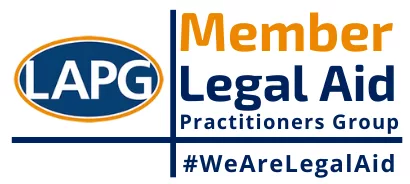The issues around forced marriage are by no means new, but there has been a concerted effort to tackle this problem in the UK over recent years. In this article we will explore the legal position in relation to forced marriage, its prevalence in the UK, and some of the current issues (both from a legal and public policy perspective).
A forced marriage is defined as one in which one or both of the spouses do not, or cannot, consent to the marriage, and a form of coercion has been involved. The legal position in the UK when it comes to forced marriage is clear: it is a criminal offence to use violence, threats or any other form of coercion to cause another person to enter into a marriage without their free and full consent.[1] It is also possible for victims, or those at risk of forced marriage, to obtain a Forced Marriage Protection Order (FMPO) in the Family Court.[2] A FMPO can be used as a pre-emptive step to protect someone who has not yet been forced to enter a marriage against their will, but is identified as being at risk. The order contains legally binding provisions designed to protect the at risk person, and breaching a FMPO is a criminal offence punishable by a sentence of up to five years imprisonment.
Although the legal framework is clear, identifying and tackling forced marriage can be very difficult. The government guidance notes that coercion has a broad definition and can include: emotional force, physical force or the threat of physical force, and, financial pressure.[3] It is vital to draw a distinction between forced marriage and arranged marriage. In an arranged marriage, although the bride and/or groom’s families may have been heavily involved, both parties have freely consented to the marriage and can withdraw at any point.
In an effort to tackle the issue of forced marriage, the government set up the Forced Marriage Unit (FMU) in 2005. The FMU leads on the government’s forced marriage policy, outreach and casework, and operates both within and outside of the UK. In 2017 the FMU gave advice or support in 1,196 cases.[4] However, as forced marriage is often a hidden crime it is difficult to ascertain the full scale of the problem. More than three quarters of the cases reported to the FMU in 2017 involved female victims, and nearly a third of cases involved victims under the age of 18. The FMU handled cases related to 65 countries in 2017, with the most prevalent ‘focus country’ (the country where the forced marriage is due to take place, or the country that the spouse is currently residing in) being Pakistan, by a significant margin. The FMU recognises that this is in part due to the large size of the Pakistani diaspora in the UK.
Despite the introduction of more legislation to target forced marriage in recent years, there is still criticism that not enough is being done. Jasvinder Sanghera, the outgoing head of the charity Karma Nirvana (and a previous victim of forced marriage herself), has highlighted the fact that there have been only three convictions in England and Wales under forced marriage legislation, and that many professionals who work with those at risk still see forced marriage as a cultural issue rather than a child safeguarding or abuse concern.[5]
Some of the legal problems involved in forced marriage cases can be seen in the recent High Court case of KBH & Ors (Forced Marriage Protection Order – Persons To Be Protected Permanently Resident Abroad).[6] In this case a woman living in the UK raised concerns about her younger siblings, who were all residing in Somalia and had been for the previous 10 years, being at risk of forced marriage. FMPO’s had been made previously in respect of the siblings, but Holman J declined to renew those orders because he did not consider that the proceedings were properly constituted. This was because, although the court could exercise jurisdiction solely on the basis that the siblings were British citizens, the application had been made by a solicitor nominally acting for the siblings. There had been no contact between the solicitor and the siblings and so the solicitor had no instructions from her clients. The Judge observed that, as the FMU appeared to be driving the proceedings, it would have been much more appropriate for the British government to have brought the case itself. This case highlights the importance of considering who is making the application and the practical issues arising from the intrinsic international nature of many of these cases.
More information and guidance about the issues surrounding forced marriage can be found on the Government’s website (https://www.gov.uk/guidance/forced-marriage) , or through the Right To Choose Campaign (http://ikwro.org.uk/forced-marriage-campaign/). For an informative overview of the current legal position, the reader if referred to the relevant chapter in Public Children Law: Contemporary Issues by Alexander Laing and Bianca Jackson.[7]
[1] Section 121, Anti-social Behaviour, Crime and Policing Act 2014
[2] Part 4A of the Family Law Act 1996, as inserted by Forced Marriage (Civil Protection) Act 2007
[3] https://www.gov.uk/guidance/forced-marriage#what-is-forced-marriage
[4] Forced Marriage Unit Statistics 2017, 16 March 2018
[5] https://www.theguardian.com/society/2018/oct/07/british-government-failing-victims-of-forced-marriage-says-charity-founder
[6] [2018] EWHC 2611 (Fam)
[7] Laing, A. & Jackson, B. Public Children Law: Contemporary Issues (Bloomsbury Professional, 2018), Chapter 5: Female Genital Mutilation, Forced Marriage and Honour-Based Violence





